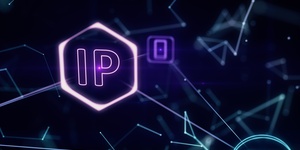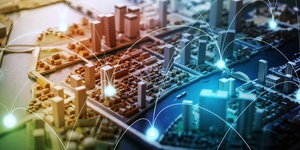
Whitepapers
Segment Routing: An ACG Research Whitepaper
Service providers and large enterprises face stiff challenges: the network infrastructure and their operations are growing at tremendous pace and becoming complex. IP/MPLS networks have become operation intensive because of their complex implementations. Service providers feel the added pressure of falling revenues and stiff competition by the over-the-top providers as well as the challenge to innovate. These drivers make the network owners think about a transport technology that can provide convergence across layers, domains and offload the complexities in the networks today.
One of these technologies is Segment Routing (SR), which has caught the attention of the network planners because of its potential to simplify and unify the transport layer. It is a source-based routing technology that enables IP/MPLS and IPV6 networks to run more simply and scale more easily. Segment Routing eliminates resource-heavy signaling protocols of MPLS and moves intelligence to the source/edge of the traffic thus removing complexity from the network. In the IPV6 networks, SR opens new possibilities of network programming and opens new avenues of flexibility, control and feature-rich use cases.
You might like similar whitepapers


The Economic Benefits of the Ciena Virtualized Edge Solution

Virtualization Journey: Cable Companies Are on Their Way

A TCO Comparison of Private WANs vs Managed Network Services for Enterprises

Simplifying IP Networks

Hybrid Networks: Integrated Provisioning for Virtual and Physical Networks

Accelerating Revenue and Innovation in CSPs' Distributed Clouds

Middle-Mile Networks Capacity Requirements for Fixed Broadband

Always On, Active Analytics and AI for Superior Performance in Digitally Powered Enterprises

An Approach to Offering Profitable Managed Network Services

AUTONOMOUS NETWORKS: NOW IS THE TIME

TCO Benefits of Converged 5G Ready IP Transport

The Economic Benefits of Juniper Apstra and CN2 in a Modern 5G Network

5G Service Assurance: The Case for AIOps

The Economic Benefits of Automating Capacity Optimization in IP Networks

Itential Vendor Profile: Automation and Orchestration for Multi-Domain Networks

Next-Generation Cloud Metro Network Requirements and Architectures

THE POWER OF DIFFERENTIATION: BUILDING BROADBAND FOR 2021 AND BEYOND

The Missing Guide in SP Managed Services Profitability

Understanding VRAN

MODERNIZING THE CABLE SERVICE DELIVERY INFRASTRUCTURE

The Economic Benefits of Distributed Broadband Services

Mitigating Market Challenges in Telecommunications

Building Open, Scalable Service Delivery Infrastructures

Coriant’s Multi-Sided Platform Partner Program: Market Impact Report

Lenovo: Data Center Switch Solutions for Enterprise Data Centers

The TCO Benefits of Dell’s Next-Generation Telco Servers

Disruption Propelling Massive Changes in Video Market

Delivering Policy Continuity at Scale in Cloud IT and Managed Network Services

Segment Routing: An ACG Research Whitepaper

Comparing Broadband Network Architectures in the Evolving Connectivity Landscape

The Economic Benefits of Virtual Edge Services

Using Open Virtual RANs in 5G

Coriant Groove™ G30 Disaggregated Platform Update: Market Impact Report

Orchestrating Dynamic Enterprise Services

Meet Market Needs with Software-Enabled Solutions

The Economic Benefits of a Super-Converged Multi-Access Edge Network

Propelling Operators to L3 Operations Autonomy and Beyond with Huawei ADN

AUTOMATING 5G ACCESS DEPLOYMENTS

Key CommSoft Learnings from #MWC19

5G Service Assurance: The Case for AIOps

Global Pricing for SD-WAN

The TCO Benefits of Distributed Broadband Services with CUPS

Maximizing Efficiency Using Standards-Based, Model-Driven Infrastructures in NFV Deployments

The Driving Factors behind the Telecommunications Shift to Cloud Metro Networks






